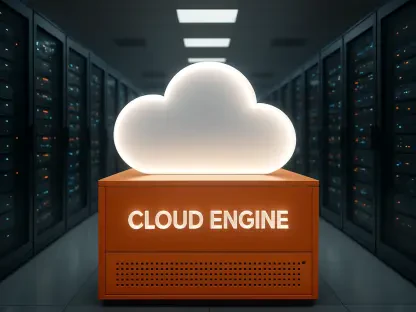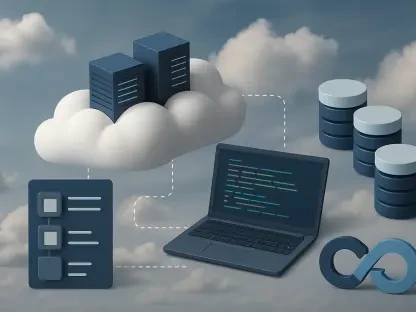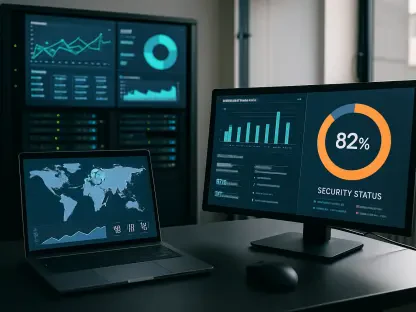In today’s digital landscape, cloud security is a paramount concern for enterprises. The reliance on cloud services has grown exponentially, but with it comes the challenge of managing credentials securely. Long-lived credentials, which do not expire, pose a significant threat to cloud security. This article explores the risks associated with long-lived credentials and the steps organizations can take to mitigate these risks.
The Security Risk of Long-Lived Credentials
Understanding Long-Lived Credentials
Long-lived credentials are access keys or passwords that remain valid indefinitely unless manually revoked. These credentials are often used for convenience but can become a major security vulnerability if not managed properly. They are a common entry point for attackers, leading to data breaches and unauthorized access. The persistence of these credentials means they can be forgotten, leaving systems exposed to potential threats. Attackers often target these long-lived credentials because they can linger unnoticed for extended periods, providing ongoing access to sensitive systems.
Furthermore, the use of long-lived credentials goes against the principle of least privilege, which is a foundational concept in security. By relying on credentials that never expire, companies inadvertently increase their attack surface, giving malicious actors more opportunities to exploit weaknesses. This issue is compounded by the fact that companies may not always track who has access to these credentials, when they were last used, or if they are still necessary. Therefore, understanding and addressing the security risks of long-lived credentials is crucial for any organization leveraging cloud services.
Prevalence Across Cloud Providers
The issue of long-lived credentials is not limited to a single cloud provider. According to Datadog’s State of Cloud Security 2024 report, a significant percentage of access keys across major cloud providers like AWS, Google Cloud, and Microsoft Azure are over a year old. This widespread presence of outdated credentials increases the risk of security breaches. Each provider, despite offering tools and guidelines for securing credentials, has users who continue to rely on these precarious security practices.
The report found that 62% of Google Cloud service accounts, 60% of AWS IAM users, and 46% of Microsoft Entra ID applications had access keys older than a year. This prevalence underscores the challenge of credential management across cloud environments, where the ease of use often takes precedence over security. Even in environments where security is a high priority, operational inertia can lead to reluctance in changing established practices. Consequently, cloud customers must regularly audit and refresh their credential management policies to adapt to evolving security threats.
Data Breaches and Long-Lived Credentials
Historical data and research indicate that long-lived credentials are often the root cause of many high-profile cloud security breaches. These credentials can be leaked through various channels, including source code repositories, container images, and build logs, making them a prime target for attackers. Unauthorized access through these leaked credentials can lead to data theft, service disruptions, and severe financial and reputational damage for the affected organizations.
Additionally, attackers have become more sophisticated in their methods, employing advanced techniques to harvest and misuse long-lived credentials. They utilize automated tools to scan for exposed secrets in public and private repositories, continuously searching for vulnerabilities in DevOps processes. By exploiting these credentials, attackers can move laterally within an organization’s network, gaining access to other systems and data, exacerbating the impact of a single breach. Thus, the industry must prioritize the management and protection of credentials to safeguard against such incidents.
Efforts to Mitigate Risks
Tools and Measures
There are several tools and measures available to counteract the risks posed by long-lived credentials. Static code analysis can help prevent secrets from reaching production environments by scanning for sensitive information within the codebase and removing it before deployment. Additionally, AWS has promoted the enforcement of IMDSv2 for EC2 instances to block credential theft by adding additional security layers to the metadata service that retrieves credentials.
Moreover, solutions such as secret management tools and automated alerts play a vital role in identifying and mitigating potential vulnerabilities. These tools monitor for anomalies and notify administrators of any unusual activities related to credential usage. By leveraging such tools, organizations can create a more robust security posture, addressing vulnerabilities before they can be exploited by malicious actors. However, it is important to remember that these technical measures must be complemented by ongoing training and awareness programs to ensure that security best practices are consistently followed across the organization.
Transition to Safer Alternatives
Despite the availability of various tools and measures, the transition to safer alternatives like single sign-on (SSO) and temporary credentials has been slow. This is due to the significant effort required to shift development workflows and the mindset change needed among teams. Organizations are often reluctant to disrupt established processes, fearing potential productivity impacts during the transition period. However, adopting these practices is crucial for enhancing cloud security, significantly reducing the risks associated with long-lived credentials.
SSO solutions streamline the authentication process, reducing the number of times users need to enter credentials and decreasing the chances of credential exposure. Temporary credentials, which are valid for a limited period, reduce the window of time in which an attacker can exploit stolen credentials. Additionally, implementing role-based access control (RBAC) and enforcing the principle of least privilege further strengthens security. These methods limit access to only those who need it, for the required amount of time, minimizing the potential impact of credential leaks. As organizations begin to recognize the urgent need for these secure practices, the industry must support them with resources and guidance to facilitate a smoother transition.
Regional and Global Implications
The problem of long-lived credentials is a global issue, with similar challenges faced by organizations worldwide. Without specific regulations governing the management of these credentials, companies continue to struggle with effective credential management. This highlights the need for a unified approach to cloud security. Regional variations in compliance requirements add another layer of complexity, necessitating organizations to navigate differing standards while maintaining robust security measures.
Cross-border data operations further complicate the situation, as multinational companies must ensure their credential management practices are consistently implemented across all regions. International cooperation among cybersecurity bodies and the standardization of best practices can help address these challenges. By adopting a global framework for credential management, organizations can ensure a uniform approach to securing their cloud environments, reducing the risk of breaches and enhancing overall resilience. Furthermore, the establishment of industry-wide guidelines and certifications can encourage companies to adhere to higher security standards, ultimately creating a safer digital ecosystem.
Recommendations for Modern Authentication Mechanisms
Short-Lived, Time-Bound Credentials
Datadog recommends that companies move towards using short-lived, time-bound credentials. These credentials are valid for a limited period, reducing the risk of unauthorized access. Tools like IAM roles for EC2 instances, EKS Pod Identity for AWS, and Managed Identities in Microsoft Azure are pivotal in achieving this transition. By implementing these tools, organizations can ensure that credentials expire automatically, reducing the likelihood of them being exploited by attackers.
Short-lived credentials force regularly scheduled renewals, which not only minimizes the window for potential misuse but also keeps administrators vigilant about credential usage. This approach also enables better tracking and auditing of credential lifecycles, helping organizations maintain compliance with regulatory requirements. Combined with automated workflows to issue, manage, and revoke credentials, this methodology creates a resilient security framework that can adapt to evolving threats. By prioritizing the shift to short-lived and time-bound credentials, companies can proactively defend against unauthorized access and bolster their overall security posture.
Centralized Identity Management
For human users, centralizing identity management is essential. Solutions like AWS IAM Identity Center, Okta, or Microsoft Entra ID can help avoid the inefficiencies and risks associated with individual cloud users. Centralized identity management ensures that access is granted based on roles and policies, enhancing overall security. These systems provide a single point of control for administrators, simplifying the process of managing user access and reducing the chances of credential sprawl.
With centralized identity management, organizations can enforce strong authentication protocols such as multi-factor authentication (MFA), further securing user accounts. These systems also support detailed logging and reporting, allowing for comprehensive monitoring and analysis of access patterns. By integrating identity management solutions across all cloud services and on-premises systems, companies can create a cohesive and secure access environment. The implementation of centralized identity management streamlines administrative tasks and strengthens security, making it a cornerstone of modern authentication strategies.
Industry Adoption and Best Practices
While there has been progress in adopting modern authentication mechanisms, the industry needs to accelerate this transition. Organizations should prioritize the implementation of best practices for credential management, including regular audits and the use of automated tools to detect and revoke outdated credentials. These practices ensure that security measures remain effective and adapt to new threats, maintaining a robust defense against unauthorized access.
Regular audits help identify gaps in security policies and uncover any discrepancies in credential usage, enabling swift remediation. Automated tools can continuously scan for exposed credentials and enforce expiration policies, alleviating the burden on security teams. By fostering a culture of continuous improvement and vigilance, organizations can better protect their cloud environments. Collaborative efforts within the industry, such as sharing threat intelligence and participating in cybersecurity initiatives, can further enhance collective security measures. Emphasizing the importance of proactive and ongoing credential management practices ultimately leads to a more secure digital landscape.
Conclusion
In today’s digital era, cloud security stands as a critical issue for businesses. The increasing reliance on cloud services has brought about significant benefits, yet it also amplifies the challenge of securely managing credentials. A primary concern is long-lived credentials, which do not expire and can be exploited if unauthorized access is obtained. These persistent credentials pose a substantial threat to cloud security as they provide cybercriminals with prolonged access to sensitive data and systems without detection.
This article delves into the various risks linked with long-lived credentials in the cloud environment and discusses the strategies organizations can implement to address these vulnerabilities. It highlights the importance of rotating credentials frequently, enforcing strict access controls, and utilizing multi-factor authentication (MFA) to enhance security. By adopting these measures, companies can significantly reduce the potential for security breaches and ensure their cloud infrastructures remain protected against threats.









